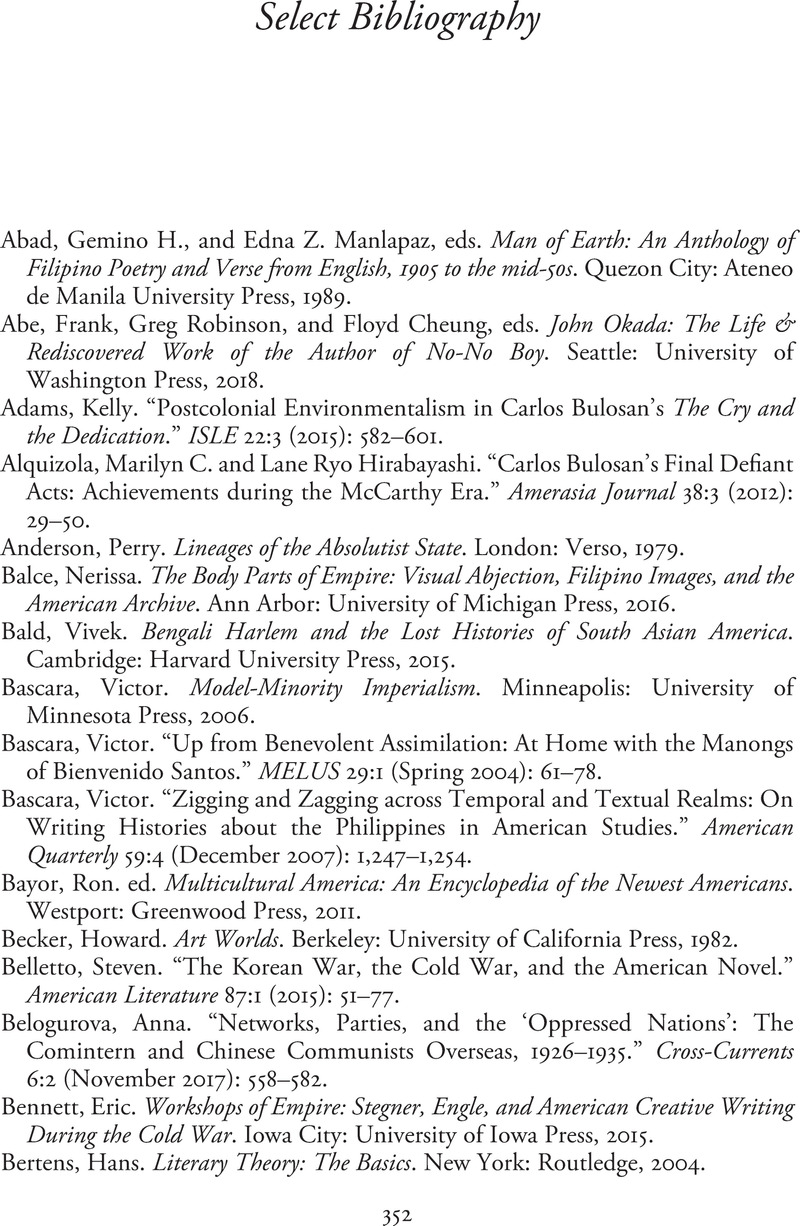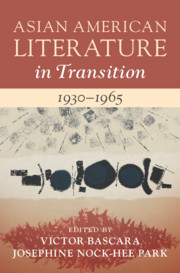Book contents
- Asian American Literature in Transition, 1930–1965
- Asian American Literature In Transition
- Asian American Literature in Transition, 1930–1965
- Copyright page
- Contents
- Figures
- Contributors
- Series Preface
- Introduction
- Part I Transitions Approached through Concepts and History
- Part II Transitions Approached through Authors, Texts, Concepts, and History
- Select Bibliography
- Index
- References
Select Bibliography
Published online by Cambridge University Press: 27 May 2021
- Asian American Literature in Transition, 1930–1965
- Asian American Literature In Transition
- Asian American Literature in Transition, 1930–1965
- Copyright page
- Contents
- Figures
- Contributors
- Series Preface
- Introduction
- Part I Transitions Approached through Concepts and History
- Part II Transitions Approached through Authors, Texts, Concepts, and History
- Select Bibliography
- Index
- References
Summary

- Type
- Chapter
- Information
- Asian American Literature in Transition, 1930–1965 , pp. 352 - 373Publisher: Cambridge University PressPrint publication year: 2021

